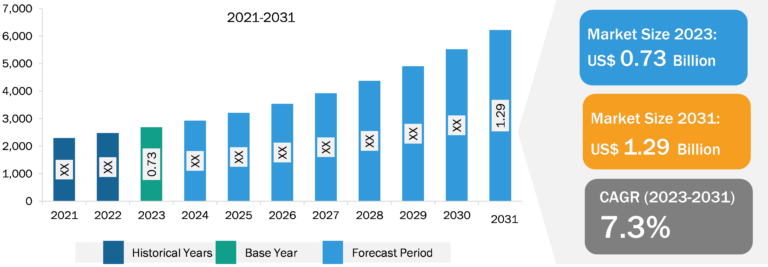
Light Therapy Market
The rapid rise in technological advancements in light therapy has played a pivotal role in propelling the growth of the light therapy market. These advancements have led to advanced light delivery systems with precise control over light wavelengths, intensity, and dosimetry. Integration of smart technologies, such as wearable devices and connected light therapy platforms, has enhanced accessibility and personalized treatment options while promoting adherence to prescribed light therapy protocols. Furthermore, ongoing technological progress has underpinned groundbreaking research in the field of photobiomodulation, leading to elucidating cellular and molecular mechanisms underlying light therapy’s therapeutic effects. This has paved the way for developing novel light-based interventions for wound healing, pain management, neurorehabilitation, and dermatological conditions, driving the diversification of applications and expanding the potential market scope. According to recent studies, photobiomodulation, a nonpharmacological strategy, has shown encouraging preliminary results in both human and animal studies. Photobiomodulation is particularly effective when used during sleep, functioning as a kind of “washing machine” for the brain to facilitate the elimination of dangerous beta-amyloid proteins.
In addition, the emergence of innovative devices for circadian rhythm regulation and the development of home-use light therapy solutions have expanded the market, making light therapy more accessible and consumer-friendly. As a result, technological advancements continue to shape the landscape of light therapy, driving innovation, accessibility, and the diversification of applications across healthcare, wellness, and consumer sectors, expanding its adoption to cater to the evolving needs of diverse end users.
Based on geography, the light therapy market is segmented into North America, Europe, Asia Pacific, Middle East & Africa, and South & Central America. North America led the global market for light therapy in 2022. North America is the most significant contributor to the growth of this market owing to the increasing number of people who have psoriasis and SAD/Winter blues symptoms. Under medical supervision, light treatment entails exposing the skin to UV light from artificial sources. UVB and UVA light, or a mix of the two, are used to alleviate symptoms, lessen inflammation, and limit the proliferation of skin cells. The Canadian Dermatology Association believes one million Canadians have psoriasis, which is a key factor that drives the demand for light therapy devices.
The Asia Pacific light therapy market is anticipated to record the fastest CAGR from 2022 to 2030, owing to huge investments in telemedicine, increased knowledge of the advantages of light treatment, and a rise in the use of light therapy equipment in clinics, hospitals, and homecare settings. The growing prevalence of sleep problems and the expanding use of light therapy devices in treating skin conditions such as eczema, psoriasis, and acne are a few factors projected to fuel the market growth in the coming years.

Light Therapy Market: Competitive Landscape and Key Developments
Koninklijke Philips N.V.; Beurer GmbH; BioPhotas; Northern Light Technologies; Lumie; Verilux, Inc; Zepter International; The Daylight Company; Zerigo Health; and Naturebright are a few of the key companies operating in the light therapy market. Market players adopt product innovation strategies to meet evolving customer demands, maintaining their brand image in the light therapy market.
A few recent developments by light therapy market players are mentioned below:
- In September 2023, AMIRO, a leading skincare and beauty tech solution supplier, showcased two of the most cutting-edge products of the year—the AMIRO S2 SEAL skin-tightening gadget and the AMIRO LumoMax LED light facial beauty device.
- In June 2022, BioPhotas, Inc. partnered with Ulta Beauty. With the aid of the Celluma PRO and Celluma ELITE models, this cooperation is anticipated to satisfy customers’ skincare needs in 55 distinct areas across the US. The FDA has approved these models to treat several ailments, including wrinkles, joint discomfort, and acne.
- In February 2022, STRATA Skin Sciences, Inc. commercially launched XTRAC Momentum 1.0, a next-generation excimer laser system, and XTRAC Momentum 1.0. STRATA Skin Sciences, Inc. Targeted UVB light therapy can be precisely delivered to particular treatment areas of the skin for adult and pediatric patients with inflammatory skin disorders such as vitiligo, atopic dermatitis, and psoriasis with the implementation of the XTRAC excimer laser technology.
- In January 2022, Bilihome concluded a fresh investment round headed by Health Innovations and Oost NL with an aim to promote the commercial launch of a smart, wearable light therapy device for jaundice, a disorder that affects 10% of infants.







